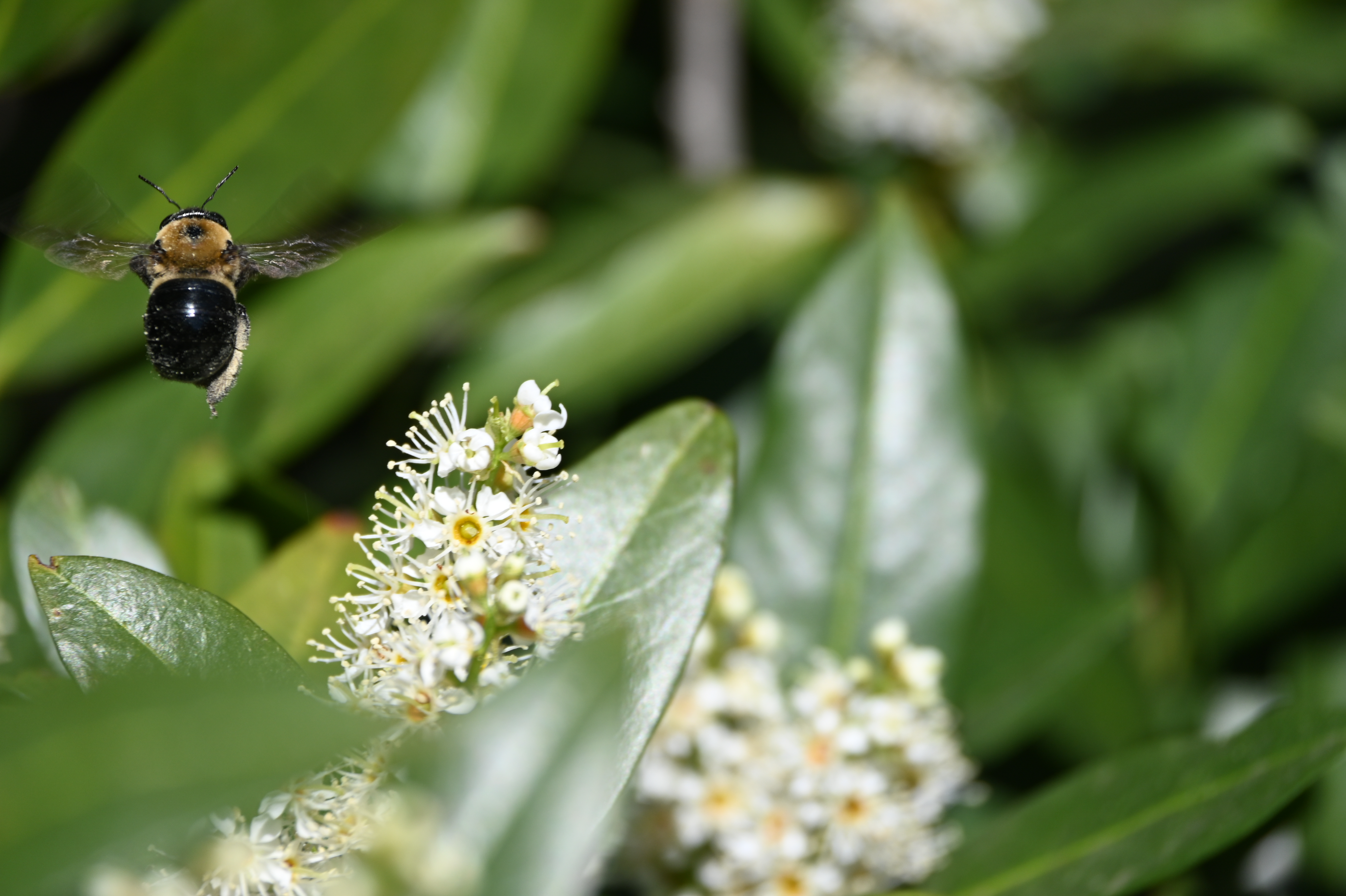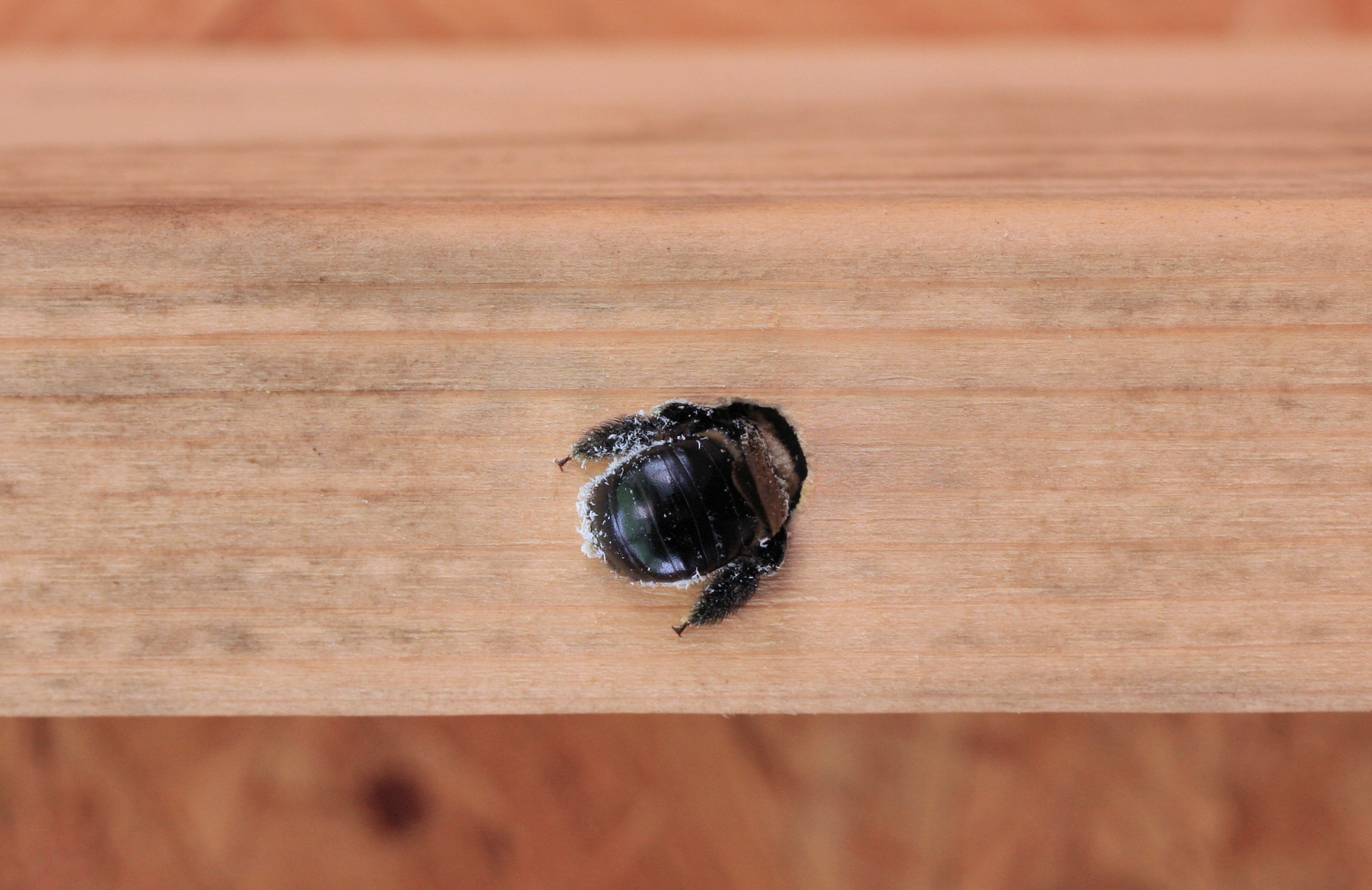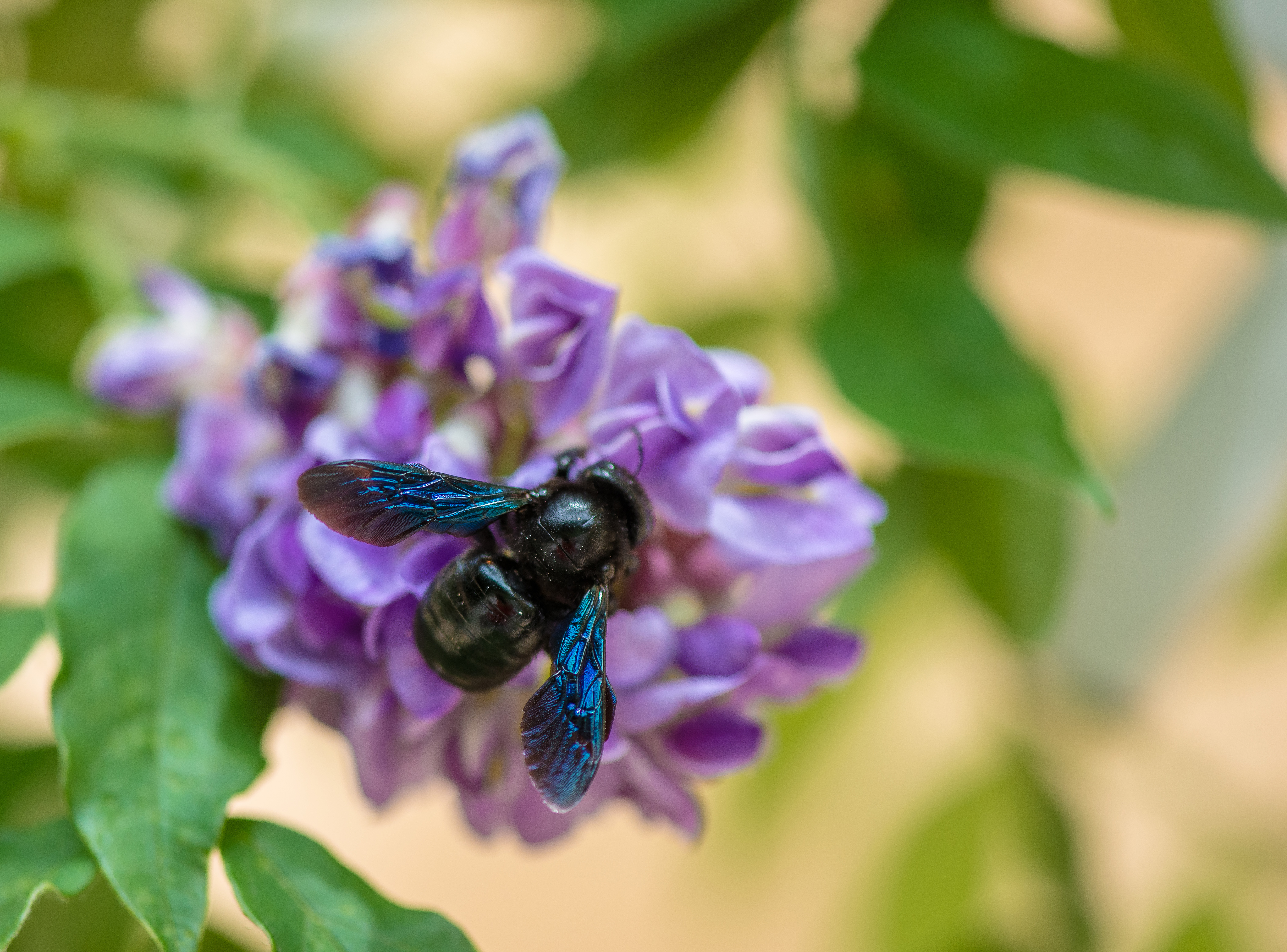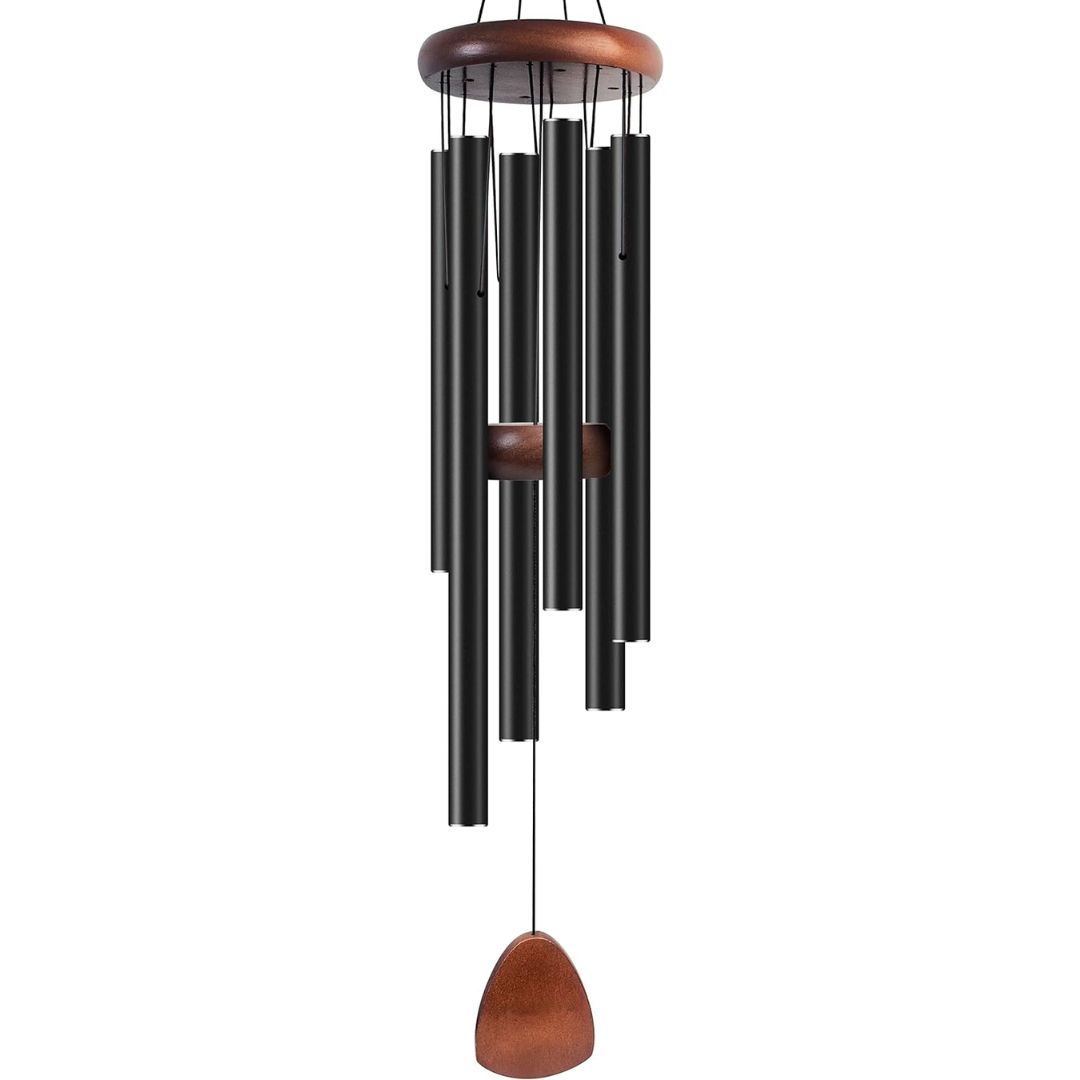How To Get Rid of Carpenter Bees That Can Damage Your Outdoor Wooden Furniture
Carpenter bees can create big problems for wooden furniture, so here are some expert tips and tricks on how you can get rid of them


As little as they may be, these creatures can become quite a nuisance. Carpenter bees are known for causing serious damage to wood structures — such as outdoor wooden furniture, decks and porches.
Carpenter bees are quite common in the US and although some may live for about a year, a new generation of bees can start to emerge. Craig Morley, a gardening expert from Budget Seeds, tell us: 'Depending on your location in the US, the bees may be around for longer'. He says that in southern areas, 'carpenter bees have the longest activity period (around February to October) due to the warmer weather, as this contributes to the ideal conditions for them to breed and build their nests. In the further north areas, carpenter bees are not active for as long, but they can still cause problems'.
So, as bee season slowly creeps up, it’s time to tackle these critters in the most environmentally-friendly way. To help keep your outdoor furniture safe, here are some expert tips and tricks on how to get rid of these small, yet strong carpenter bees.
1. Use Citrus Spray

Sprays made from citrus are a natural way to keep the carpenter bees away, as it seems the bustling bees may not not like the smell.
It's easy to find carpenter bee repellent online (try this from Amazon), but as well as purchasing a spray, why not opt make your own? Craig says, 'you can easily make your own natural citrus spray by boiling up citrus peels in water, or adding drops of citrus oil to water'. Once you have created your spray, you can use it around the areas where you think bees may be entering. Craig says if you are concerned about the spray damaging wood, 'test it out first on a small inconspicuous area'.
2. Treat damaged or fading wood

'Carpenter bees are thought to prefer untreated or unfinished wood, especially that of backyard decks, fencing or window sills,' so Craig says you should 'treat' your backyard wood to prevent a bee infestation.
He adds: 'You should paint, varnish or treat the wood in your backyard in early spring, as this can sometimes deter the bees from burrowing into the wood'.
The Livingetc newsletters are your inside source for what’s shaping interiors now - and what’s next. Discover trend forecasts, smart style ideas, and curated shopping inspiration that brings design to life. Subscribe today and stay ahead of the curve.
3. Turn up the music

It seems that these busy bees are not into music much, so why not turn it up a notch?
'Carpenter bees are allegedly affected by sound, so increasing the volume of things near to where they have made their home may prompt them to move out,' Craig explains.
If you are going to try this out, please be mindful on your neighbors. As Craig says, 'ensure that you have warned your neighbors first if the noise will last for a few days'.
As an alternative, you can hang wind chimes instead as this can 'also deter them from settling in the wood'.
Are carpenter bees beneficial insects or pests?

Carpenter bees are not all bad, as they are actually quite beneficial garden insects.
Craig tells us that just like any other bee, 'they are important pollinators of flowering plants that are found in your garden, nature and on farms, with this particular species of bee thought to be responsible for pollinating some agricultural crops too'.
'They are also beneficial for the natural recycling of wood, as their tunneling is a natural process that helps with the decomposition of decaying wood in nature, which aids in the recycling of nutrients in the ecosystem,' Craig adds.
What damage can carpenter bees cause?

Craig says although these little creatures do not consume wood as food, they do 'tunnel through it to nest'. Some of the damage that may be cause due to this includes:
1. Tunnelling through wood
Craig explains that female carpenter bees make holes into wood to lay their eggs, and 'these tunnels can sometimes be quite extensive. If multiple bees use the same piece of wood over time, this can begin to affect its structural integrity'.
2. Entrance holes
'Entrance holes where bees have tunnelled into the wood can be unsightly and may function as an entry point for water, which can cause rotting amongst other damage,' he says.
3. Carpenter bees can stain wood
Craig tell us, when the bees go in and out of their nests 'they may leave behind yellowy-brown staining around the entrance holes which can disfigure the appearance of the wood.
4. Carpenter bees can attract woodpeckers
Woodpeckers love to eat the larvae of carpenter bees, and 'if they detect the presence of larvae they can peck large holes into the wood when they are trying to get them out,' Craig says.

Faiza is the Renovation Editor at Livingetc. She previously worked for The Independent as a News Feature Writer, where she crafted lifestyle, entertainment, and news stories. She also worked as an Audience Editor for the newspaper for almost two years. Thriving in the busy newsroom, Faiza also spent her time crafting stories for Sky News as an SEO reporter, where she produced stories based on trending topics. Lifestyle and interior design have been areas of interest for her for some time, and as she advances in this field, she will continue to refine her skills in all aspects of design. Faiza has a background in SEO, social media, and reporting. Her passion for writing goes beyond her work as she loves all things poetry and creative writing.


